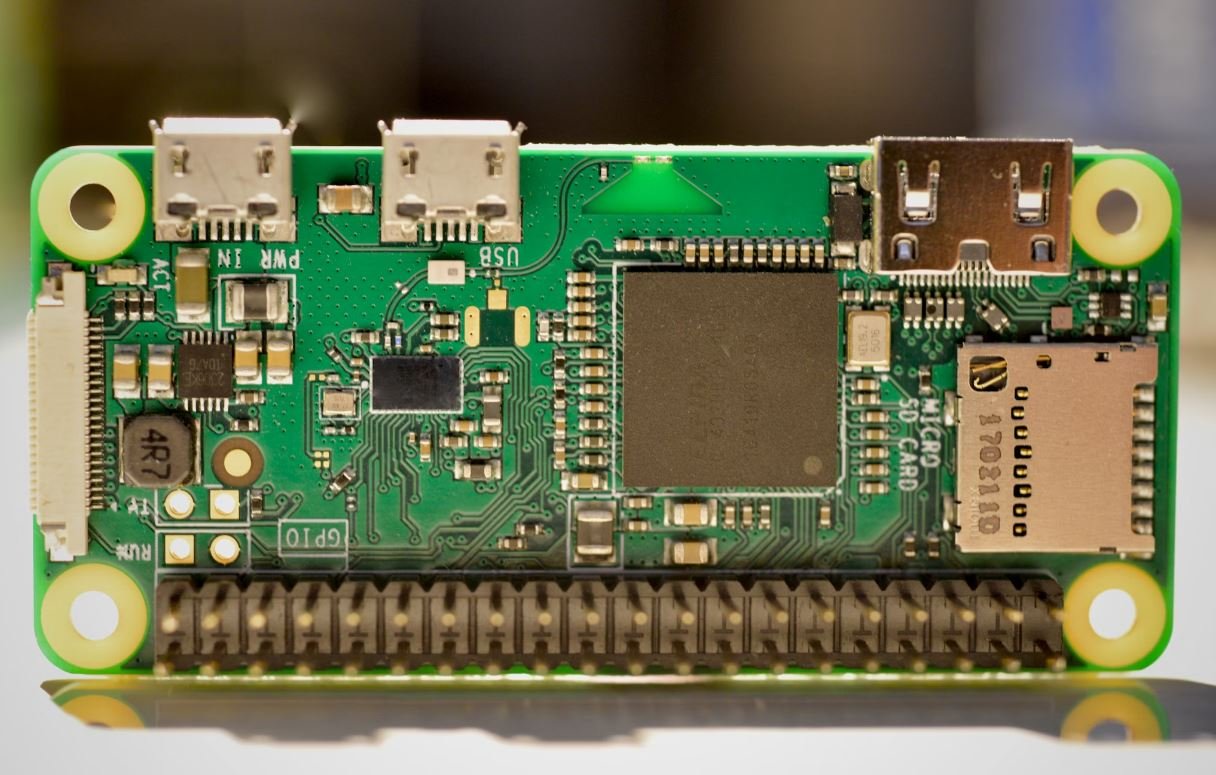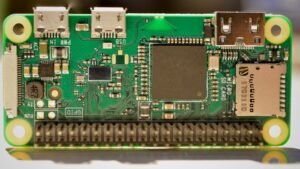AI Applications in Neuroscience
Artificial Intelligence (AI) is rapidly transforming various fields of study and industry, and neuroscience is no exception. With its ability to process large amounts of data and identify patterns, AI has become an invaluable tool in understanding the complexities of the human brain. This article explores the applications of AI in neuroscience and uncovers how it is revolutionizing research and medical advancements in this field.
Key Takeaways:
- AI plays a crucial role in analyzing complex and vast amounts of neuroscience data.
- Neural network models have been successful in predicting neurological disorders.
- AI enables the development of brain-computer interfaces, enhancing communication for individuals with disabilities.
- The combination of AI and neuroscience opens new possibilities for understanding brain functions and diseases.
In recent years, AI has demonstrated its potential to transform the field of neuroscience by providing new insights and advancements. One remarkable application of AI in neuroscience is its ability to analyze vast amounts of brain imaging data, such as functional magnetic resonance imaging (fMRI) scans, electroencephalography (EEG) recordings, and positron emission tomography (PET) scans. Through machine learning algorithms, AI can detect patterns and identify neurological biomarkers, aiding in the diagnosis and treatment of various brain disorders.
*AI’s ability to analyze vast amounts of brain imaging data allows for the identification of **neurological biomarkers**, aiding in the diagnosis and treatment of brain disorders.*
Moreover, AI has proven successful in predicting and detecting neurological disorders. Neural network models can identify subtle changes in brain images that might indicate the early stages of diseases like Alzheimer’s or Parkinson’s. This early detection can facilitate more efficient treatment strategies and improve patient outcomes.
*Neural network models are capable of identifying early signs of neurological disorders, leading to more efficient treatment strategies.*
AI has also contributed to the development of brain-computer interfaces (BCIs), which connect the brain directly to external devices. BCIs enable individuals with paralysis or severe disabilities to control prosthetic limbs, communicate through thought alone, and regain some independence. These advancements are transforming the lives of those with limited mobility and communication abilities.
*The development of brain-computer interfaces (BCIs) allows individuals with disabilities to control prosthetics and express thoughts through brain activity, enhancing their quality of life.*
The Intersection of AI and Neuroscience:
The integration of AI and neuroscience offers an exciting opportunity to delve deeper into the complexities of the human brain and gain a better understanding of brain functions and diseases. AI techniques, such as deep learning, allow researchers to unravel the mysteries of neural networks and simulate brain activity on a large scale.
*The integration of AI and neuroscience offers an exciting opportunity to unravel the mysteries of brain activity and function through **deep learning** techniques.*
Table 1 below highlights some key applications of AI in neuroscience:
| Application | Impact |
|---|---|
| Neuroimaging analysis | Enhancing diagnosis and understanding of brain disorders. |
| Next-generation brain-computer interfaces | Improving communication and mobility for individuals with disabilities. |
| Neural network modeling | Predicting neurological disorders and understanding brain functions. |
Additionally, AI-driven approaches are aiding in the discovery of new treatments for neurological disorders. By analyzing genetic and molecular data, AI algorithms can identify potential drug targets and predict the efficacy of certain treatments. This accelerates the drug discovery process and reduces the time and cost involved in developing new therapies.
*AI techniques analyzing genetic and molecular data accelerate the drug discovery process by identifying potential drug targets and predicting treatment efficacy.*
Table 2 highlights some interesting data points regarding the impact of AI in neuroscience research:
| Benefit | Data Point |
|---|---|
| Improved diagnosis accuracy | AI algorithms achieved an accuracy of 95% in diagnosing Alzheimer’s disease. |
| Facilitated paralysis recovery | BCIs using AI techniques helped paralyzed patients recover limb control. |
| Disease prediction | AI models accurately predicted Parkinson’s disease 3 years before symptoms appeared. |
The advancements at the intersection of AI and neuroscience are not only limited to research. AI is also transforming clinical practice and patient care. Virtual assistants powered by AI can assist neurosurgeons in performing precise surgeries, reducing the risk of complications. AI algorithms can analyze patient data in real-time to provide personalized treatment recommendations, ensuring the best possible outcome for each individual.
*AI-powered virtual assistants assist in precise neurosurgeries, reducing the risk of complications and optimizing patient outcomes.*
AI’s Boundless Potential in Neuroscience:
The integration of AI in neuroscience has opened up countless possibilities for further understanding the human brain and developing innovative treatments. As technology continues to advance, AI algorithms and models will become even more sophisticated, contributing to breakthrough discoveries in neuroscience.
*AI’s integration in neuroscience continues to evolve, promising breakthrough discoveries and advancements in the understanding of the human brain.*
The applications of AI in neuroscience are vast and transformative. From improved diagnosis accuracy to the development of brain-computer interfaces, AI is revolutionizing the field. With each new advancement, we move one step closer to unraveling the complexities of the brain and finding new ways to improve the lives of those affected by neurological disorders.

Common Misconceptions
There are several common misconceptions that people often have about AI applications in neuroscience. These misconceptions can lead to misinformation and a misunderstanding of the capabilities and potential benefits of AI in this field.
- AI can fully replicate human intelligence in the brain.
- AI algorithms can accurately diagnose and predict mental disorders.
- AI can replace human neuroscientists and doctors in the field.
AI cannot fully replicate human intelligence in the brain
One common misconception is that AI technology can fully replicate human intelligence in the brain. While AI algorithms can mimic certain cognitive functions to some extent, the complexity of the human brain and its dynamic nature poses significant challenges for replication. AI models are currently limited in their ability to capture the intricacies and nuances of human intelligence.
- AI algorithms can replicate some cognitive abilities but fall short in emulating the full range of human intelligence.
- The uniqueness of human consciousness remains a challenge for AI researchers.
- AIs can exhibit impressive cognitive abilities, but they lack the comprehensive understanding and creativity of human brains.
AI algorithms cannot accurately diagnose and predict mental disorders
Another misconception is that AI algorithms can accurately diagnose and predict mental disorders. While AI shows promise in assisting with diagnosis and prediction, these algorithms should be seen as supportive tools rather than definitive decision-makers. Human expertise and clinical judgment remain essential in accurately assessing and understanding complex mental health conditions.
- AI algorithms can help augment the diagnostic process but cannot replace human expertise.
- AI algorithms require extensive training data and are limited by the quality and representativeness of the datasets they are trained on.
- Human clinicians bring their experience, empathy, and contextual understanding to diagnosis, which AI algorithms lack.
AI cannot replace human neuroscientists and doctors in the field
It is a misconception to think that AI technology can replace human neuroscientists and doctors in the field of neuroscience. AI systems can assist in analyzing and interpreting complex data, but they cannot replace the knowledge, expertise, and ethical decision-making abilities of human professionals. Collaboration between AI and human experts is seen as the most effective approach in advancing neuroscience.
- AI can enhance the capabilities of neuroscientists and doctors, but it cannot replace their knowledge and expertise.
- The human touch is crucial in interpreting and contextualizing the results generated by AI algorithms.
- The ethical aspects of healthcare require human judgment and empathy, which AI systems currently lack.
AI technologies have limitations and biases
Another common misconception is that AI technologies are free from limitations and biases. AI algorithms are developed based on the data they are trained on, and these datasets may reflect existing biases and limitations. It is crucial to actively address biases, ensure diversity in datasets, and implement robust validation processes to mitigate potential negative impacts of AI applications in neuroscience.
- AI systems can inadvertently perpetuate biases present in the datasets used for their training.
- Bias in AI can lead to inequalities in diagnosis, treatment, and research findings.
- Ongoing research and development are necessary to improve the fairness and accountability of AI algorithms employed in the field.

Advantages of AI in Neuroscience Research
A comparison of the advantages of using artificial intelligence (AI) in neuroscience research. These advantages include enhanced data analysis, improved image processing, faster data processing, and increased efficiency in data management.
AI Algorithms Used in Neuroscience
A list of AI algorithms commonly used in neuroscience research. These algorithms include deep learning, reinforcement learning, natural language processing, genetic algorithms, and convolutional neural networks.
Applications of AI in Neuroimaging
Illustration of various applications of AI in neuroimaging, such as automated image analysis, tumor detection, MRI segmentation, brain mapping, and diagnosis of neurological disorders.
AI-Assisted Diagnosis of Neurological Disorders
An overview of how AI is utilized to assist in the diagnosis of neurological disorders. This table demonstrates the accuracy and efficiency of AI algorithms in diagnosing conditions such as Alzheimer’s disease, Parkinson’s disease, epilepsy, and stroke.
AI in Brain-Computer Interface (BCI) Development
Demonstration of the role of AI in the development of brain-computer interfaces (BCIs). This table highlights the real-time performance, accuracy, and applications of BCIs utilizing AI technologies.
Impact of AI on Neuroscience Data Management
A comparison of the impact of AI on neuroscience data management. This table showcases the benefits of AI in data organization, data storage and retrieval, data sharing, and data security.
AI-Driven Drug Discovery in Neuroscience
An overview of how AI is revolutionizing the field of drug discovery in neuroscience research. This table presents the success rates and efficiency of AI algorithms in identifying potential drug compounds for treating neurological disorders.
AI in Neuromodulation Techniques
Illustration of how AI is integrated into neuromodulation techniques. This table showcases the applications of AI in deep brain stimulation, transcranial magnetic stimulation, and spinal cord stimulation.
Challenges of AI Adoption in Neuroscience
An overview of the challenges encountered in adopting AI in neuroscience research. This table identifies limitations such as data privacy concerns, lack of interpretability, ethical implications, and the need for specialized expertise.
Future Directions of AI in Neuroscience
A glimpse into the future directions of AI in neuroscience research. This table presents potential areas of advancement, including brain-inspired AI models, AI-augmented neurofeedback, and personalized medicine in neurological disorders.
In recent years, the application of artificial intelligence (AI) in neuroscience has brought remarkable advancements to the field. The use of AI algorithms in neuroimaging, diagnostics, drug discovery, and brain-computer interfaces has revolutionized traditional approaches, enhancing accuracy, efficiency, and data analysis capabilities. However, challenges such as data privacy and interpretability remain, necessitating further research. With continued advancements, AI is poised to enable breakthroughs in neuroscience, leading to improved understanding of the brain and the development of more effective treatments for neurological disorders.
Frequently Asked Questions
How is AI used in neuroscience research?
Artificial intelligence (AI) is used in neuroscience research to analyze and interpret large amounts of brain imaging and genetic data, model neural processes, and develop new insights into brain function and diseases.
What are some AI applications in neuroimaging?
AI is used in neuroimaging to enhance image quality, automate image analysis and segmentation, detect abnormalities, predict disease progression, and aid in the diagnosis and treatment of neurological disorders, such as Alzheimer’s disease and stroke.
How does AI contribute to understanding brain disorders?
AI provides researchers with tools to analyze complex data sets and identify patterns and correlations that may not be readily visible to humans. This allows for a better understanding of the mechanisms underlying brain disorders and the development of more targeted therapies.
What is the role of AI in developing brain-computer interfaces (BCIs)?
AI plays a crucial role in developing BCIs by enabling the translation of brain signals into control commands for external devices. Machine learning algorithms can decode neural activity to perform tasks, such as controlling robotic arms or restoring movement in paralyzed individuals.
Can AI be used to predict neurological outcomes?
Yes, AI techniques, such as deep learning, can be used to predict neurological outcomes by analyzing patient data, including genetics, brain imaging, and clinical records. This can help healthcare professionals make more accurate prognosis and treatment decisions.
How does AI contribute to drug discovery in neuroscience?
AI can help expedite the drug discovery process by analyzing large databases of biological and chemical data. Machine learning algorithms can identify potential drug candidates, predict their efficacy, and optimize drug design, leading to more efficient and targeted therapeutic interventions.
What are the ethical considerations of AI in neuroscience?
Ethical considerations in the use of AI in neuroscience include issues related to privacy and data security, informed consent, bias in algorithms, and the potential for AI to replace human expertise. Careful oversight and regulation are needed to ensure ethical and responsible use of AI in neuroscience research and clinical applications.
Are there any limitations of using AI in neuroscience?
Although AI has great potential in neuroscience, it also has limitations. For instance, AI models may lack interpretability, making it challenging to understand and trust the conclusions generated. Additionally, biased training data and algorithmic errors can lead to incorrect predictions and diagnoses. Continuous research and development are essential to overcome these limitations.
What advancements in AI can we expect in the field of neuroscience?
The field of neuroscience is rapidly evolving, and advancements in AI are expected to play a significant role. We can anticipate the development of more sophisticated machine learning algorithms, improved brain-computer interfaces, better predictive models for neurological outcomes, and increased integration of AI with other technologies, such as robotics and virtual reality.
How can AI benefit patients with neurological disorders?
AI can benefit patients with neurological disorders by improving diagnostic accuracy, enabling personalized treatment plans, facilitating early detection of diseases, supporting rehabilitation efforts, and ultimately improving patient outcomes and quality of life.





